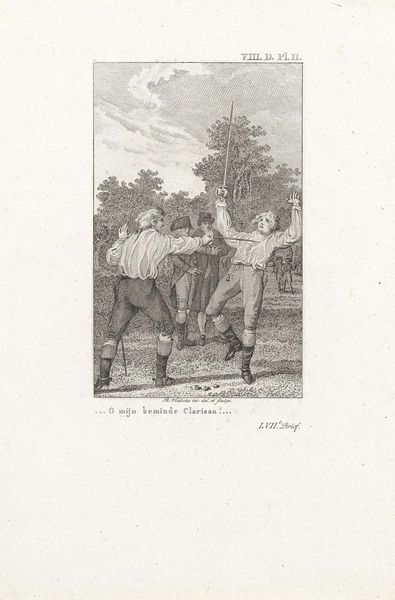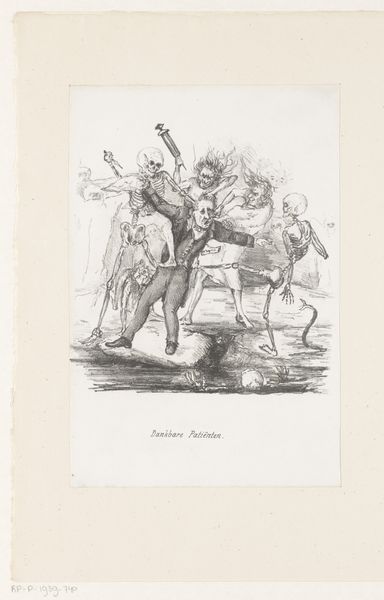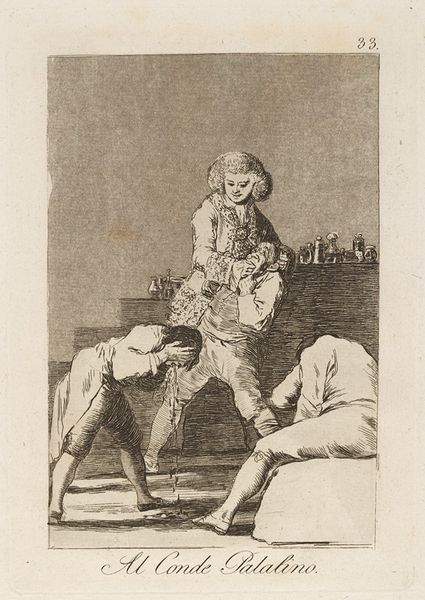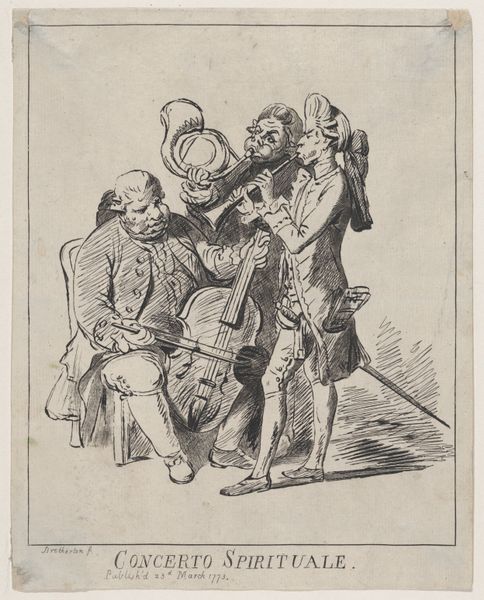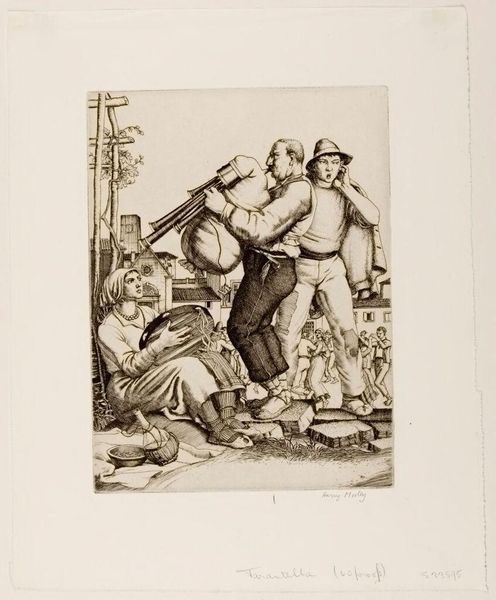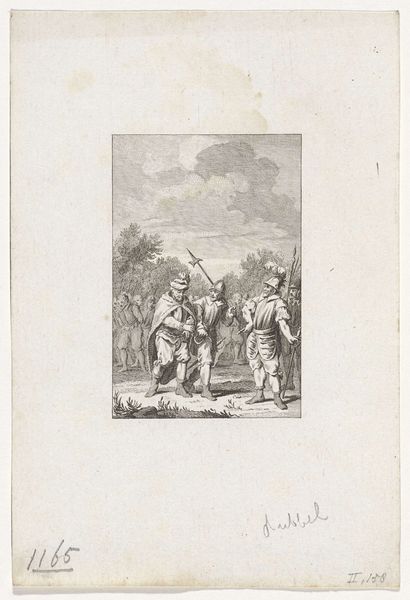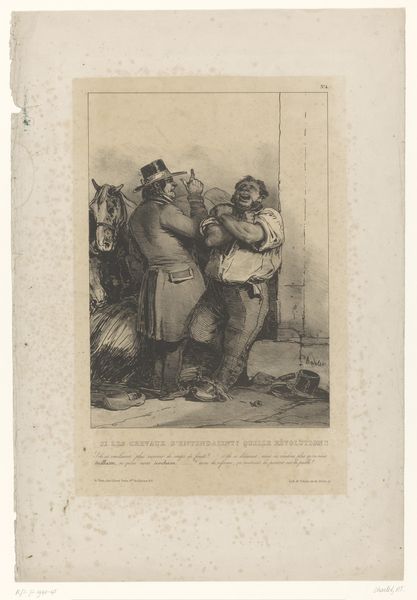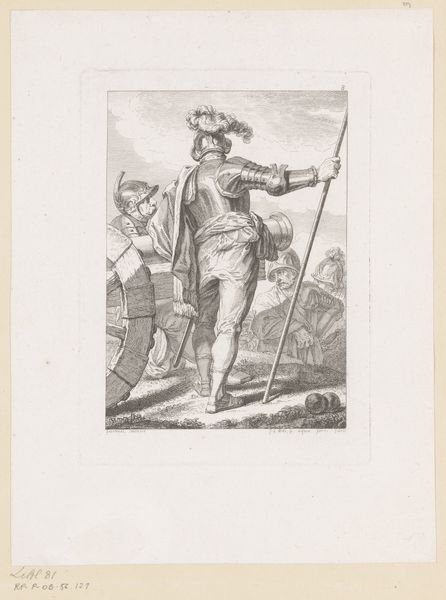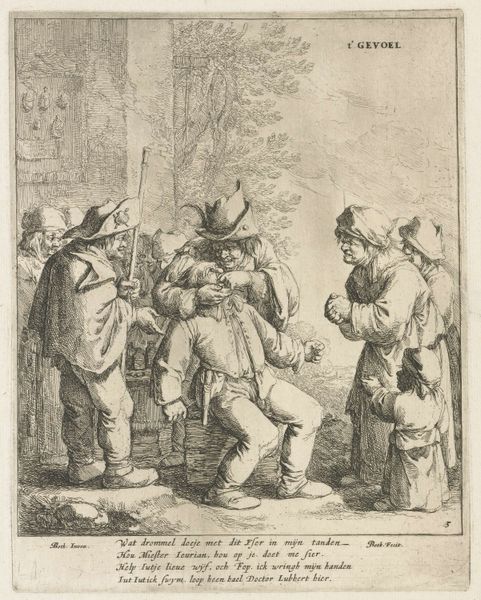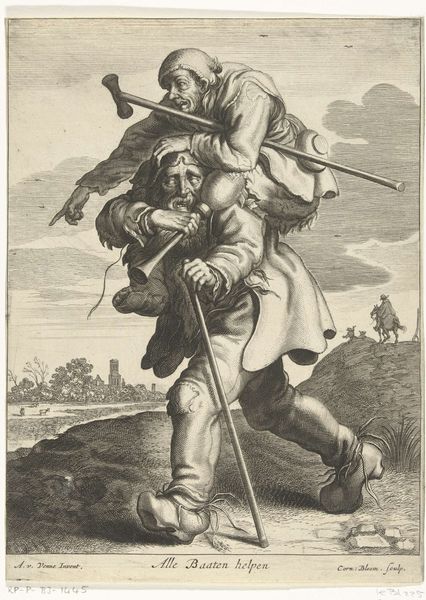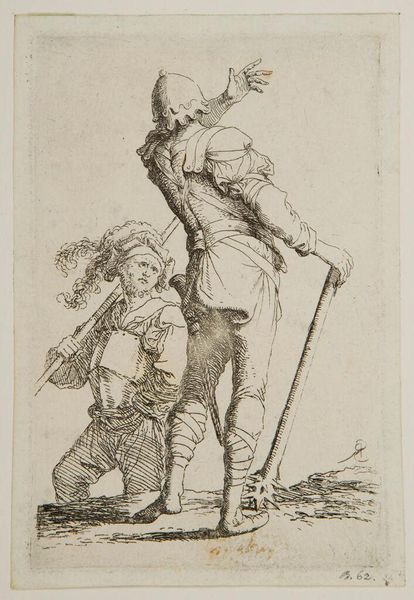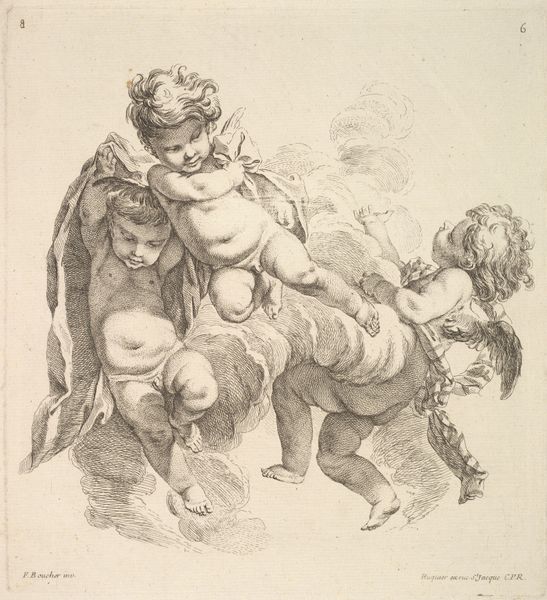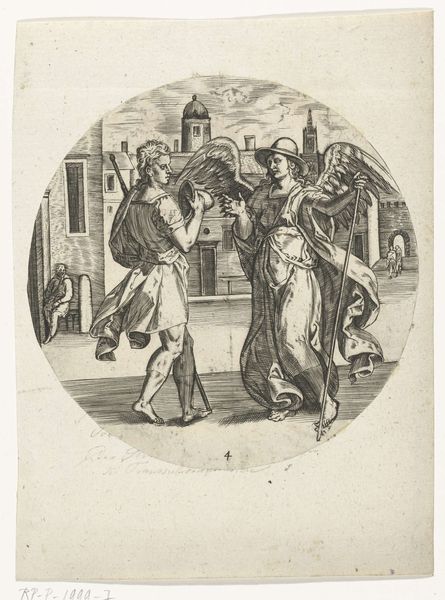
drawing, lithograph, print, etching, paper
#
drawing
#
narrative-art
#
lithograph
# print
#
etching
#
landscape
#
figuration
#
paper
#
romanticism
#
france
#
genre-painting
#
history-painting
#
realism
Dimensions: 259 × 227 mm (image); 325 × 268 mm (sheet)
Copyright: Public Domain
Editor: This is "The Good Comrades" by Jean Henri Marlet, a lithograph created around 1818 or 1819. It's strikingly somber, the figures drawn with a sharp, almost brittle line. What catches your eye when you look at this piece? Curator: I'm immediately drawn to the interplay of line and form. Consider how Marlet uses the stark contrast of light and shadow to define the soldiers' bodies, the folds of their uniforms. The composition hinges on this dramatic tension between the crisp details of the foreground figures and the sketchier, more ambiguous forms receding into the background. Editor: So, it's about how the composition is built, rather than necessarily what it depicts? Curator: Precisely. Look at how the lines create the sense of weight bearing down on the two soldiers, especially on the figure carrying the wounded man. Do you see how the artist utilizes short, repetitive strokes to suggest the burden, not just physically, but perhaps emotionally as well? The success of this print resides within the materiality and construction itself. Editor: It's interesting you focus on the lines and composition first. I was initially thinking about the emotion. Curator: While emotional interpretation is certainly valid, consider how Marlet uses the visual elements to evoke that very feeling. For instance, notice the slight angle of the carrier's body - its obliqueness - it emphasizes his own struggle, all constructed using hatching techniques. It is an exploration of form guiding emotion. Editor: So by looking at the structure, the forms and lines, you get a deeper understanding of the feeling. Thanks! Curator: Indeed. The art's power isn't just *what* it shows, but *how* it shows it.
Comments
No comments
Be the first to comment and join the conversation on the ultimate creative platform.
